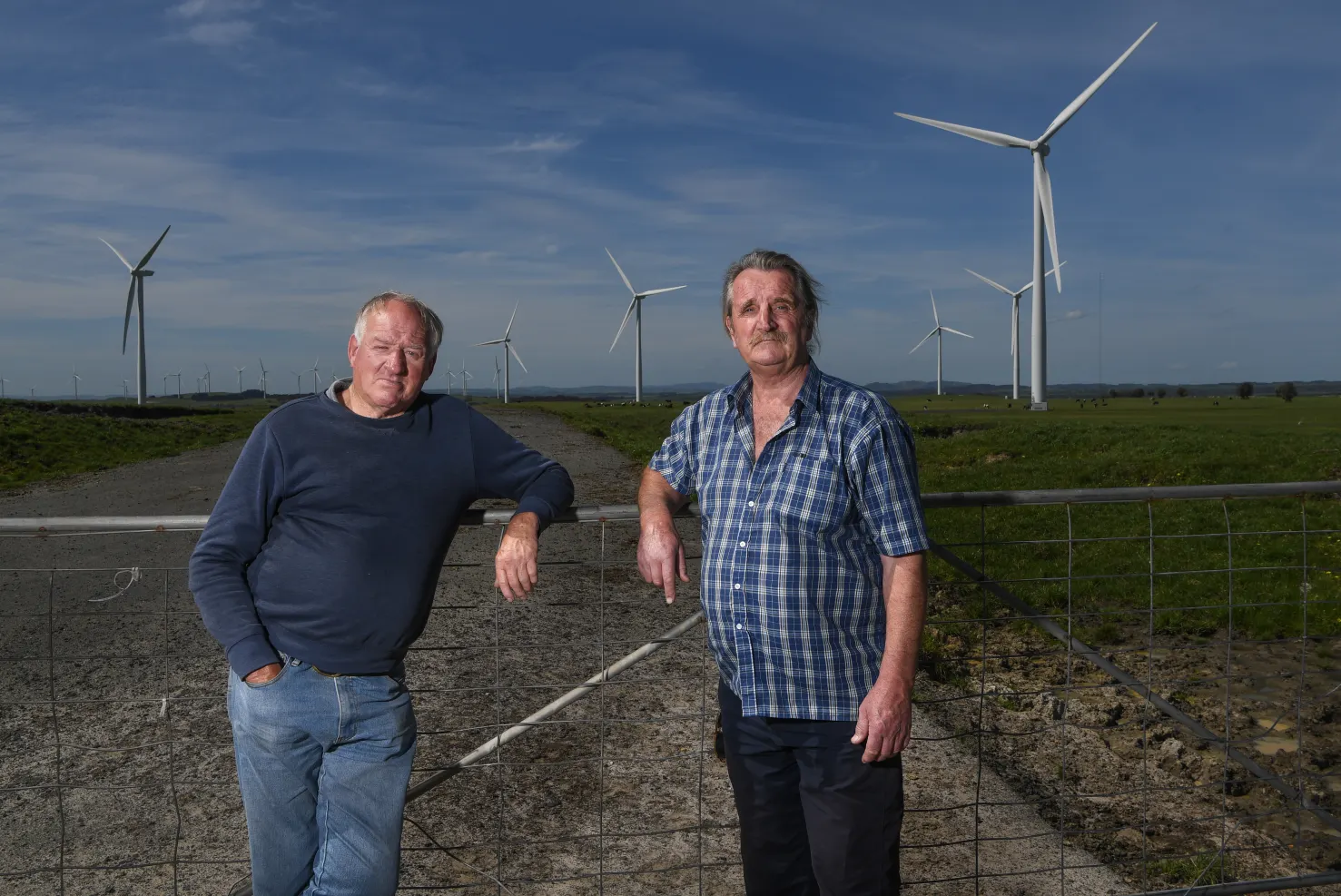Australia’s Supreme Court handed a win to two farmers who claimed a neighbouring wind plant emitted unreasonable noise at their properties since 2015.
Lawyer Dominica Tannock, who represented the plaintiffs John Zakula and Noel Uren, said the decision in 2022 was the first of its kind in Australia and would set a precedent for individuals challenging energy corporations.
“This judgment will send shivers down the spine of corporate Australia and around the world,” she said.
As Wind Concerns has noted, “noise” includes the audible portion of sound as well as the infrasonic spectrum — lower frequencies that cannot be heard but are felt. While Zakula described the sound from the turbines just over one kilometre from his home as “like a roaring train”, he also described symptoms consistent with “wind turbine syndrome”, a medical definition recognized by a French Court in 2021 and coined in the peer-reviewed research of Dr. Nina Pierpont, PhD.1
Your body feels tight, your head feels in a compressive state. You just have to get out of the place.
John Zakula, “Farmers win wind farm battle, court rules turbines too noisy”, March 25, 2022, theage.com.au
In her judgment, Justice Richards said renewable energy was a socially valuable activity and it was in the public interest that it continue, according to The Age. “However,” she added:
…there is not a binary choice to be made between the generation of clean energy by the wind farm, and a good night’s sleep for its neighbours. It should be possible to achieve both.
Court ruling; “Farmers win wind farm battle, court rules turbines too noisy”, March 25, 2022, theage.com.au

against Bald Hills Wind Farm. CREDIT:JUSTIN MCMANUS
The wind farm operator, Infrastructure Capital Group, ‘was ordered to pay Zakula and Uren $168,000 and $92,000 respectively: half for noise disturbance, at $12,000 per year, and half in aggravated damages because the company’s conduct was “high-handed” towards them.’
Typical of wind energy corporations, health claims were arrogantly dismissed, as they have been in other countries and regions such as Ontario, Canada.2 In this case, the company “denied that [the plaintiffs] had any cause for complaint, minimized their lived experience of the noise and treated them as hypersensitive trouble-makers,” said Justice Richards, who concluded the men were not hypersensitive to noise.
The Courts Are Listening
The winds of change are slowly beginning to blow in favor of the victims of this mass “renewable energy” experiment as well-documented studies on infrasonic harm continue to make their way into the courts. A French Court of Appeal recognized “the typical symptoms: headache, painful pressure on the ears, dizziness, weakness, tachycardia, tinnitus, nausea, nosebleeds and insomnia”, which was “traced back to low-frequency noise and infrasound.” It awarded the plaintiff’s claim for damages of €128,000.3
In Norway, the Supreme Court awarded herdsmen 90 million NOK (10 million USD) in 2021 for wind farms that interfered with their livelihoods due, again, to wind turbine “noise.”4
The Irish Supreme Court overturned approval for a Cork windfarm after finding the board erred in failing to consider submissions from a local couple concerning developing knowledge about noise impact from turbines.5
UPDATE: In a later decision (2024), the High Court ruled that those impacted by turbine “noise” are now entitled to damages.6
And in the equivalent of the Supreme Court in France, it made a historic ruling in March 2024 against granting permits for onshore wind ‘to protect the health of local residents.’7
In a court case in Ontario in 2011, the Tribunal determined:
…the debate should not be simplified to one about whether wind turbines can cause harm to humans. The evidence presented to the Tribunal demonstrates that they can, if facilities are placed too close to residents. The debate has now evolved to one of degree. The question that should be asked is: What protections, such as permissible noise levels or setback distances, are appropriate to protect human health?
Environmental Review Tribunal, Case Nos.: 10-121/10-122 Erickson v. Director, Ministry of the Environment, July 18, 2011, p. 207
“There is absolutely no question that industrial wind turbines placed among humans or animal populations have detrimental effects,” says Wind Concerns Editor in Chief, Mark Mallett. “But governments and energy companies are deliberately turning a blind to this reality, are cherry-picking flawed industry-funded studies in order to advance their agendas,8 or citing the deeply problematic Health Canada study on noise.9 And the media uncritically asserts that it’s just in people’s heads. But the cost is starting to mount in more ways than one.
“The question is how long will it take before this failed wind energy experiment dies its long overdue death?”
- cf. Turbine Sickness: How Far Away is Safe?[↩]
- Watch: Down Wind[↩]
- cf. connexionfrance.com[↩]
- cf. An Assault on Lakeland Animals and Wildlife[↩]
- December 12, 2019; irishexaminer.com[↩]
- cf. Ireland: Landmark Wind Turbine Noise Ruling[↩]
- cf. France: Historic Decision Halts Wind Development[↩]
- A noise assessment completed by Marshall Day Acoustics, on behalf of Infrastructure Capital Group in 2017, was “plainly flawed” and did not demonstrate the wind farm’s night-time noise was within its permit, concluded Justice Richards.[↩]
- cf. Health Canada Study Problematic[↩]
Wind Concerns is a collaboration of citizens of the Lakeland Alberta region against proposed wind turbine projects.


